The COLUMN function in Excel proves to be an invaluable tool for spreadsheet users, offering efficient ways to manage and manipulate data. By understanding its capabilities and applications, users can streamline their workflows, enhance productivity, and unlock the full potential of their Excel spreadsheets. Whether used for referencing specific column numbers, dynamically adjusting formulas, or generating customized reports, the COLUMN function empowers users to accomplish tasks with precision and accuracy. With its versatility and ease of use, the COLUMN function in Excel remains a fundamental feature for data analysis, reporting, and decision-making. Incorporating this function into your Excel repertoire can lead to more efficient data management and better insights into your spreadsheet projects. Mastering the COLUMN function opens doors to enhanced productivity and proficiency in Excel, making it an indispensable tool for professionals across various industries.
This Content Covers:
- What is the COLUMN Function in Excel?
- Formula and Arguments of COLUMN Function.
- How to use the COLUMN Function in Excel? (With Examples)
1. What is the COLUMN Function in Excel?
In Excel, the COLUMN function is a lookup/reference function. The column number of a particular cell reference can be looked up with the help of this method. For example, the formula =COLUMN(D2) returns 4 because column D is at the 4th position in the excel worksheet. COLUMN function returns the column number of the cell with the formula when no reference is given.
2. Formula and Arguments of COLUMN Function.
Formula: COLUMN([reference])
Arguments: Reference is the only parameter used by the COLUMN function. We will receive a number value from the function. For the reference argument, keep the following in mind:
- A cell range or a single cell address can be used as the reference.
- Multiple references or addresses cannot be used as references for this function.
- It will return the column number of the cell with the formula when no reference is provided.
3. How to use the COLUMN Function in Excel? (With Examples)
Now we will see some of the uses of the COLUMN function with examples.
Example 1: The COLUMN function returns the associated column number for a single cell reference.
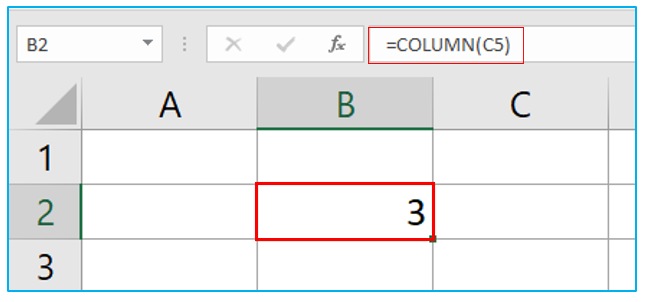
Example 2: Without a reference, COLUMN provides the column number of the cell where the formula is located.
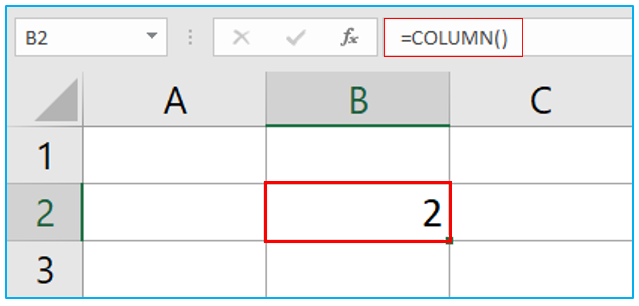
Example 3: Now, if you want to use the COLUMN function on a range instead of one single cell it will return the column numbers for that entire range. If you use this formula in Microsoft 365 which supports dynamic array formulas, the result will be horizontally split into three cells starting with the cell the formula in applied in.
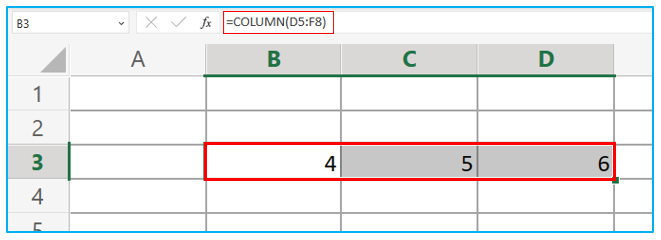
If you use the earlier versions of Excel then the formula will just return the first item of the range.
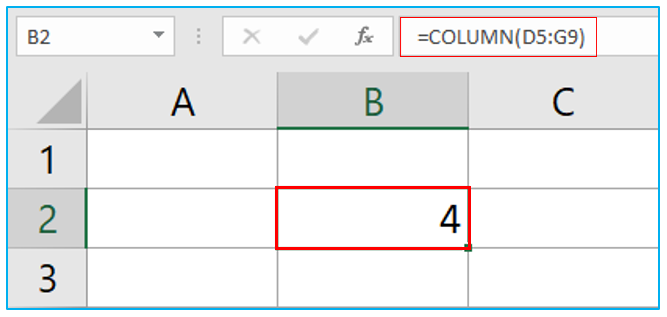
Example 4: If you want to know how many columns are there inside a range, you can use the COLUMNS function.
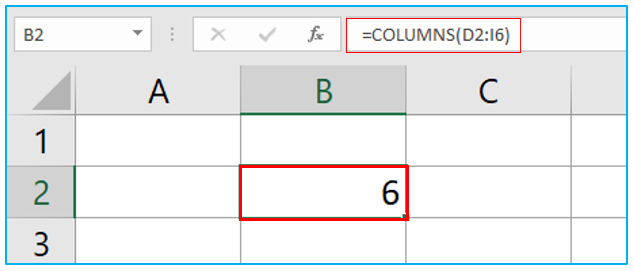
Example 5: Suppose you own a business and the expense of that business is payable every two months. The expenses here are $300. We can apply a formula by combining IF, MOD, and COLUMN functions to produce a fixed value every two months.

Select cell B4 and insert the following formula inside that cell. Drag the cell towards its right direction from cell B4 to M4.
=IF(MOD(COLUMN(B4)-1,2)=0,$A$1,0)

Application of COLUMN function in Excel
- Column Number Reference: The COLUMN function returns the column number of a reference, providing a quick way to identify the column position within a spreadsheet.
- Dynamic Formula Adjustments: Utilizing the COLUMN function within formulas allows for dynamic adjustments based on column positions, enabling automated calculations that adapt to changes in spreadsheet layout.
- Conditional Formatting: By leveraging the COLUMN function with conditional formatting rules, users can apply formatting based on specific column numbers, such as highlighting entire columns or ranges for visual clarity.
- Data Validation: Incorporating the COLUMN function into data validation rules enables the validation of input values based on column positions, ensuring data integrity and accuracy.
- Customized Reporting: With the COLUMN function, users can create customized reports that automatically update based on changes in column positions, providing real-time insights into data trends and patterns.
- Array Formulas: Integrating the COLUMN function into array formulas allows for advanced data manipulation and analysis, facilitating complex calculations across multiple columns for comprehensive data processing
For ready-to-use Dashboard Templates:
